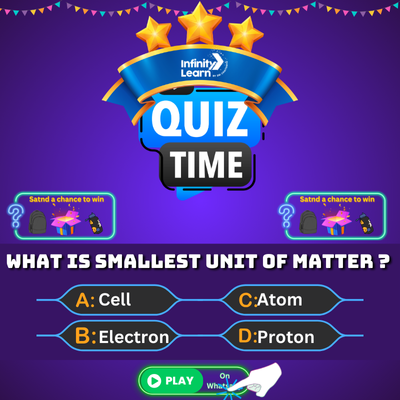Table of Contents
The full form of ARPANET is Advanced Research Projects Agency Network. It was the first working packet-switching network and is known as the start of the internet. ARPANET was made by the United States Department of Defense. It was a big step forward in the world of computers and online communication. ARPANET was the first network to use the TCP/IP protocol. This system is now the base of the internet. In this article, we will learn about the full form of ARPANET, how it started, how it worked, what made it special, and how it changed the digital world.
ARPANET Full Form
ARPANET stands for Advanced Research Projects Agency Network. It was created by ARPA, which is a part of the U.S. Department of Defense. The main aim was to build a strong and safe communication system. This system was needed in case of a war or emergency. ARPANET helped connect universities and research centers so they could share their work and data easily. Over time, this network became the foundation of the internet.
ARPANET Background and History
The idea of ARPANET came in the late 1960s. During this time, technology was growing fast. In 1966, ARPA’s director Robert Taylor and scientist Lawrence Roberts thought of making a computer network. This network would link research centers that were working with ARPA.
In 1969, ARPANET became active. It had four main nodes:
- University of California, Los Angeles (UCLA)
- Stanford Research Institute (SRI)
- University of California, Santa Barbara (UCSB)
- University of Utah
These four places were the first to send and receive data using packet-switching.
Do Check: AICTE Full Form
ARPANET Purpose and Objectives
ARPANET had many goals:
- Help research centers talk to each other.
- Let them share computers and data.
- Create a system that would still work even if part of it failed.
- Test new ways to send data across long distances.
ARPANET also helped test new ideas in networking, which later shaped the internet.
ARPANET Key Features
Here are some things that made ARPANET special:
- Packet Switching Instead of sending all data in one line, ARPANET broke it into small pieces called packets. These packets moved separately and joined again at the end. This method made communication fast and more secure.
- Decentralized Design ARPANET had no central control. If one part stopped working, the rest of the network would still work. This was helpful during emergencies.
- Remote Access People could use programs and files stored on other computers. This helped students and scientists work together easily.
- Protocol Development ARPANET helped create TCP/IP. These are the rules that let computers talk to each other. By 1983, TCP/IP became the standard for networks.
Do Check: ADHD Full Form
How ARPANET Worked?
ARPANET used special machines called Interface Message Processors (IMPs). These were like post offices for data. Every computer had an IMP.
Here’s how it worked:
- A person sent data.
- The data was split into packets.
- These packets went through many IMPs.
- The packets were joined again at the other end.
Each packet could take a different path. This way, the network could avoid any blocked or broken paths.
ARPANET Development Milestones
Here are some big moments in ARPANET’s story:
- 1969: ARPANET started with four nodes.
- 1971: More computers joined. The first email was sent.
- 1973: ARPANET connected to computers in the UK and Norway.
- 1983: TCP/IP became the main protocol.
- 1990: ARPANET was shut down.
ARPANET Impact and Legacy
ARPANET changed the digital world forever. It made many new things possible, like:
- Creating tools like email.
- Letting people work together from far away.
- Helping build the early internet rules.
- Inspiring more research and better networks.
Thanks to ARPANET, we have the internet that we use every day.
Do Check: Airbnb Full Form
ARPANET Limitations
Even though ARPANET was great, it had some problems:
- Limited Access Only a few colleges and research centers could use it. Normal people or companies could not join.
- Low Security In the beginning, ARPANET did not have strong safety systems. Anyone on the network could see messages.
- Not for Business Use ARPANET was for study and research only. It was not built to help companies or everyday users.
- Slow Speed It was not fast. It could not handle large files or videos like we do now.
- Hard to Use You needed special skills to use ARPANET. It was not simple like today’s internet.
- Hardware Dependence ARPANET needed special machines (IMPs). Other networks could not connect easily.
Do Check: AFCAT Full Form
Conclusion
The full form of ARPANET is Advanced Research Projects Agency Network. It was built to help research and defense, but it ended up changing the world. ARPANET brought us things like email, remote access, and the idea of a connected world. It showed how people and computers could work together. Even today, the internet follows many rules first made for ARPANET. This network taught us the value of sharing, connecting, and growing together.
ARPANET Full Form FAQs
What is the full form of ARPANET?
ARPANET stands for Advanced Research Projects Agency Network. It was a network made to connect research and defense centers.
What was the main purpose of ARPANET?
The main goal was to make a safe and strong network for researchers. It also helped them share data and resources.
When did ARPANET stop working?
ARPANET was shut down in 1990. By then, new and better networks had replaced it.
Which were the first places connected to ARPANET?
The first four were UCLA, Stanford Research Institute, UCSB, and the University of Utah.








